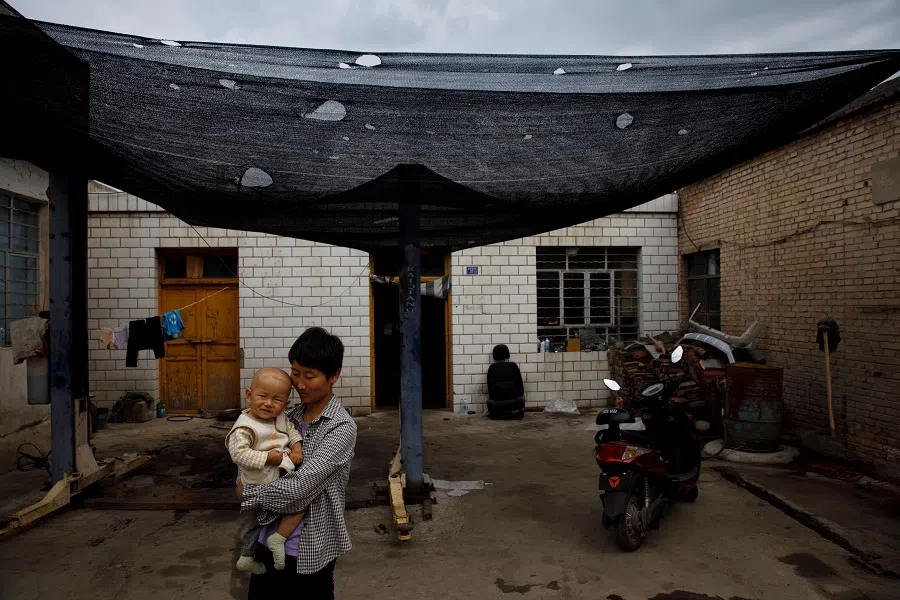Chinese villagers: The unsung heroes behind China's rapid AI development
Yin Ruizhi points out that China's AI industry was able to scale up so quickly thanks to an army of rural folk ready to do the laborious yet essential task of data annotation.

Following the Covid-19 outbreak, China's internet industry has been a bright spot in the economy. At a State Council Information Office press conference, Wen Ku, director general of the Department of Information and Communications Technology Development at China's Ministry of Industry and Information Technology, said, "The statistics showed that network flow during the pandemic increased by 50% compared with the end of last year [2019]. We did some statistical analysis in certain areas, and the growth rate in Wuhan during the same period reached 60-70%."
Behind this surge in internet traffic lies the adoption and widespread use of internet applications. For example, according to statistics from Qianzhan Industry Research Institute, the daily active users of online medical consultation apps peaked at 6.712 million, with a largest increase of roughly 1.6 million users, or a growth of 31.28% over the previous year. Food delivery apps are also seeing tremendous growth, in a food delivery industry that has seen a nearly 10% increase in new delivery riders. Experts estimate that the total volume of food delivery will increase by 80% from 2019 to 2020. Various hotels have also launched room service robots to reduce human contact. The remote education, rural e-commerce, and remote work industries are also growing rapidly.
An extremely important prerequisite for AI technologies to perform speech and image recognition is data annotation, an area of work that is now heavily propped up by China's rural internet economy.

While the business volumes of these internet industries are quickly growing, the number of employees in these industries is not. This is because people have turned to artificial intelligence (AI) to rapidly improve efficiency. An important but hidden front of China's rapid AI development is the rural internet economy.
China's villages, AI, and the internet economy
An extremely important prerequisite for AI technologies to perform speech and image recognition is data annotation, an area of work that is now heavily propped up by China's rural internet economy.
Data annotation is the process by which data processors process machine learning algorithms using annotation tools like BasicFinder. Data annotation consists of image annotation, speech annotation, text annotation, video annotation and so on. Basic forms of annotation include annotating frames, 3D frames, text transcription, image plotting, pinpointing the contours of the target object etc.
To solve this problem, Chinese companies have been outsourcing such work to villages and towns, where there are large numbers of rural "left-behind women" and vulnerable groups of middle- and old-aged workers gathered to do the task.

For example, if AI needs to learn about the structure of human bones and joints, it would need to process a large quantity of manually labelled photographs that have all the 15 important joints marked out. Data annotators would be needed to manually analyse these photographs and label the 15 points from the top of a person's head, to his neck, chest, kneecaps and so on. These 15 points are then connected to form a stickman. For example, a machine identifies if a player is exercising through the movements of these crucial joints in motion-sensing games like Kinect. This branch of AI is also useful in many other popular human motion recognition applications.
For AI to attain such standards of accuracy, it needs to analyse at least tens of millions of photographs. On average, an image annotator is able to process approximately 5,000 to 20,000 of such annotations per month. That is to say, roughly 1,000 annotators and several months of work are needed to train this type of AI.
This is a classic example of a labour-intensive industry that is extremely cost-sensitive. Thus, such industries would never thrive in big cities where the cost of living is high. To solve this problem, Chinese companies have been outsourcing such work to villages and towns, where there are large numbers of rural "left-behind women" and vulnerable groups of middle- and old-aged workers gathered to do the task.
Within three short years, the AI annotation industry has grown to become a market worth almost tens of billions of dollars in China. The rapid development of AI applications in China is inseparable from the large number of small- and medium-sized data annotation enterprises in China' villages and towns.

The question is, why was China able to build this industry up in such a short amount of time? China has a vast and scattered rural population which suffers from a serious information lag. While salary costs are low, the cost of bringing workers together and getting them organised is high. If China's small- and medium-sized data annotation enterprises relied solely on themselves, they could hardly have grown to its current scale so quickly.
Hence, another unsung hero apart from these small- and medium-enterprises is China's grassroots organisations, which have always paid close attention to people's livelihoods and employment. Having realised the demand of this industry, these organisations took swift action, cooperated with small enterprises that came from the big cities to start a business in the villages, and organised training programmes for local residents to expand their employment opportunities.
For example, the office of the Hualizhuang village committee at Fenghuang Town, Juancheng County of Shandong province, has become the training ground and workplace of data annotators. The local township government has not only given these small- and medium-enterprises credit, but also provided them with good publicity channels and a workplace. They are another important enabler of the rapid development of China's rural internet economy.
Related: China looks forward to a new world of 5G connectivity | Unexpected digital age hazards amid the Covid-19 pandemic | A whole new world with the Internet of Things | China's public healthcare system: Robust enough for 1.4 billion people? | Chinese housewives: The driving force behind China's e-commerce platforms





